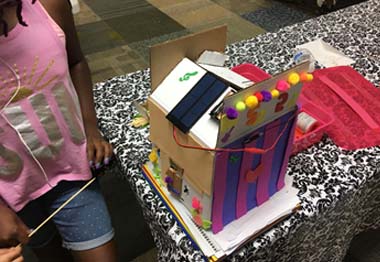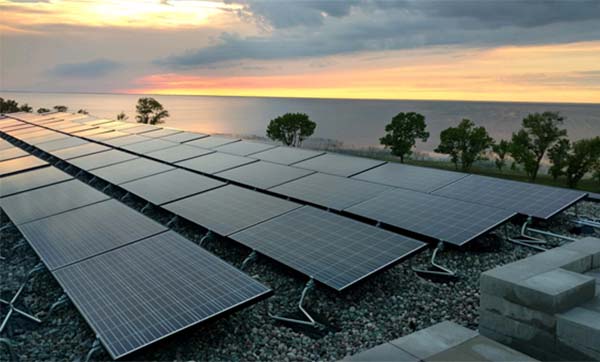Great Lakes
Motivation to Transition off Fossil Fuels
For the Red Lake Band of Ojibwe in north-central Minnesota, walleye and wild rice are the sacred things creation stories are made of. When high levels of mercury began turning up in the walleye
caught in Red Lake, which is the largest, natural, freshwater lake that is entirely within Minnesota, the tribe was rightfully alarmed. The mercury contamination was attributed to the burning
of coal in power plants to generate electricity. Tribal council recognized the need to eliminate the use of fossil fuels in order to protect the Earth and all people.
Into this void stepped Bob Blake and
Solar Bear, which is an Indigenous-owned full service solar installation
company, founded on the principles of social impact, sustainability, job creation, and diversity. Solar Bear began asking questions: can we develop partnerships and collaboration? Can we create
a micro grid? An energy company? Can we use what we learn as a roadmap for other tribes?
This line of thinking led to the Red Lake Solar Project. This project included rooftop solar arrays on the three tribal casinos, Red Lake school buildings, and the Government Center, for a total
of ten locations with rooftop solar, nine of which have storage systems, and one solar farm. Most of the people involved in this process were Red Lake Band members. This project was a step
in the direction of furthering Solar Bear’s mission, but they knew there was more to be done.
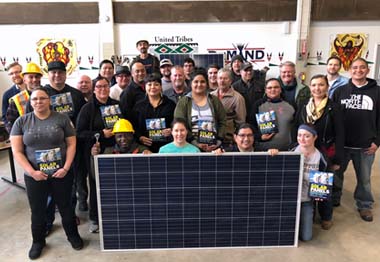 All photos courtesy of Bob Blake.
All photos courtesy of Bob Blake.
Taking it Further
Enter: the
Just Solar Returning Citizens Initiative.
This Initiative is a collaboration between Solar Bear,
Minnesota Interfaith Power and Light, and the Minnesota Department
of Corrections, to provide training in solar installation and site evaluation to formerly incarcerated citizens. This workforce development program provides meaningful work for a segment of the population
that often is lacking in job skills, lowers the recidivism rate leading to stronger communities, and helps fight climate change, all in one fell swoop. Much in the way the
GI Bill function, Blake sees this as taking $1 and turning it into $7.
But Solar Bear knows there are still more benefits to be gained and work to be done, which has led to the creation of The Solar Cub K-12 Program, a STEM-based educational program for youth to learn about
gardening, recycling, renewable energy, energy efficiency, and energy consumption. Using education about solar energy, Solar Cub strives to promote the three prongs of sustainability: economic, social,
and environmental. Solar Cub will pilot its concepts in collaboration with the
Science Museum of Minnesota
and Red Lake tribal schools, with the intention to then spread to all tribal schools in Minnesota, and keep on going as far as it can from there.
True Sovereignty = Energy Sovereignty
The Red Lake Band of Ojibwe is in a unique position compared with other Native American tribes, in that most of their land areas remained intact when the United States was allotting parcels and reservations.
Many other tribes have land that looks like a checkerboard, which complicates energy distribution and ownership since it takes costly infrastructure such as power lines to move electricity from its source to
where it is used. The Red Lake tribe is therefore able to purchase power lines and infrastructure and create its own energy company if it chooses, similar in nature to the model of California energy companies.
This creates jobs and opportunities and leads to a stronger, healthier, community that is less reliant on outside sources. Owning and running an energy company is a 24/7 job builder for the community.
To Blake, true sovereignty requires energy sovereignty.
Energy sovereignty can help alleviate energy poverty, move tribal nations from purchasing energy to community ownership, and help get the country moving in one direction, much like the mission to land humans
on the moon did. The moonshot brought the whole country together because they believed in something greater than themselves. Providing meaningful work and making communities healthier are things that all
humans can get behind to support.
The main barrier to expanding solar electricity to tribes is in dealing with the local utilities. Utilities know that there are funds to be exploited on tribal lands, such as the
Low Income Energy Assistance Program (LIHEAP) and funds provided by the
U.S. Housing and Urban Development (HUD). That coupled with the difficulty of securing financing for new projects means that it would be in the best interest of tribes to form their
own utility companies. Hopefully, tribal utility companies would have the intention to protect their people and their lands, which would ease the path towards renewable energy development and create a just transition off of
fossil fuels. In the meantime, Blake has found success in crowdsourcing to finance solar projects, and is hoping for further success using that model so it can be one avenue tribes can replicate when seeking to fund large solar projects.
Blake would like to see all 573 federally recognized tribes sign on to the
Paris Agreement. The National Congress of American Indians and the
Native American Rights Fund have both signed on, but since tribes are classified as political entities, each tribe could sign on to the Agreement and further the effort of reducing emissions to combat climate change. Although
tribes cannot take back lost lands physically, they can take them back morally.
Solar project development, micro grids, native energy companies; job training, meaningful work, challenging the prison-industrial complex; children, education, inspiration. These are the ways that Solar Bear is seeking to
disrupt the cycle of poverty, environmental degradation, and powerlessness. May we all rise to the occasion.
This profile was developed in 2019 by Dara Marks-Marino, Institute for Tribal Environmental Professionals, Northern Arizona University, with financial support from the Bureau of Indian Affairs. The profile is available on the Tribes & Climate
Change website:
www7.nau.edu/itep/main/tcc/Tribes. The tribal climate change profiles featured on the website are intended to be a pathway to increasing knowledge
among tribal and non-tribal organizations interested in learning about climate change mitigation and adaptation efforts.
Special thanks to Bob Blake for his assistance in developing this profile.
For more information please contact:
Citation: Marks-Marino, D. (September 2019) Solar Bear. Climate Change Program, Institute for Tribal Environmental Professionals, Northern Arizona University.
Available at:
www7.nau.edu/itep/main/tcc/Tribes/gl_solarBear
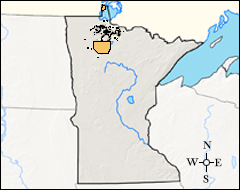
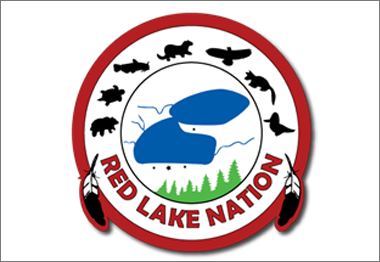
 All photos courtesy of Bob Blake.
All photos courtesy of Bob Blake.
